|
|
|
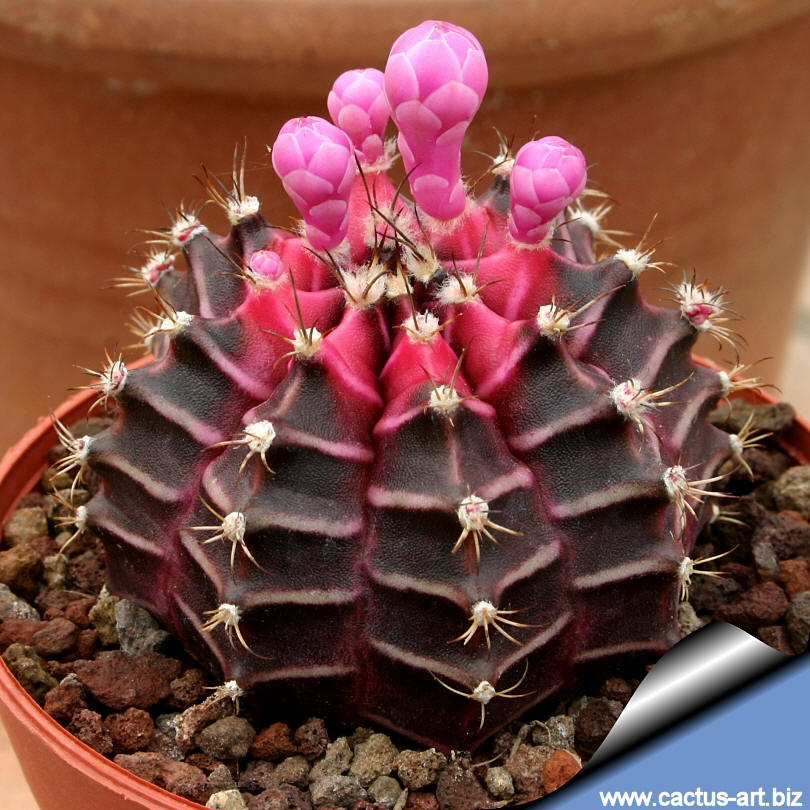
Gymnocalycium mihanovichii f. rubra
It is an ensemble of popular mutant
with more or less red and banded bodies. Some of
this colourful plants (those with some chlorophyll) are able to grow on
their own roots and are very priced by collectors.
|
|
Description:
Gymnocalycium mihanovichii friedrichii 'rubra,' comprises
a large group of popular mutants, characterized by more or less red
coloured bodies. They are red (but also orange, dark purplish, yellow or
even white) because they contains few chlorophyll or even no chlorophyll
at all, much like the red we see in the fall foliage of trees when their
chlorophyll breaks down and disappears. Without chlorophyll many of
these mutants gymnocalyciums can not produce sugar and without
sugar they will die. The only way to keep them alive is to graft them
onto another cactus which has chlorophyll and which will provide sugar
to the mutant
scion. The chlorophyll containing bottom part of the graft, called
the
stock, can be any number of different cactus species. In the case of
the gymnoclyciums it is usually
Hylocereus, a tropical cactus. The oldest and more famous
mutant is the bright orange-red and completely clorophyl-less
cultivar "Hibotan" often known as the
“Red Cap Cactus”, or “Ruby Ball”. While the yellow and paler
forms are sometime known as “Blondie” or “Moon Cactus”.
The first red "HIBOTAN" were produced by
E. Watanabe in Japan. Sowing of some thousands of seeds of G.
friedrichii yielded two bright
red freak seedlings which would have died quickly had they not been
grafted at once. From these have been produced literally millions of
plants, distributed all over the world, by repeated grafting and
cutting.”
Furthermore a number of variegated cultivars only
partially de-coloured are known as "HIBOTAN NISHIKI".
Some of this colourful plants (those with some chlorophyll) are able
to grow on their own roots and are very beautiful and priced by
collectors.
Stem: Flattened globose to elongated globose, white, yellow, orange,
red, greenish-purple, reddish brown to a dark grape colour up to 10 cm
tall (or more) and 6-12 cm in diameter, often branching profusely from
the sides.
Ribs: 8-14, very prominent, and sharp banded whit strong
dark brown markings especially when young, and these sometimes have
cross-bands of lighter colours.
Radial spines: 3-6, acicular, to awl shaped, light to dark brown,
somewhat twisted, 0,7-1 cm long.
Central spines: Usually absent.
Flowers: Pale-pink to purplish-pink, 6-7 cm long.
Fruit: Gray-green to pinkish-red up to 4 cm long, diameter
1 cm.
|
|
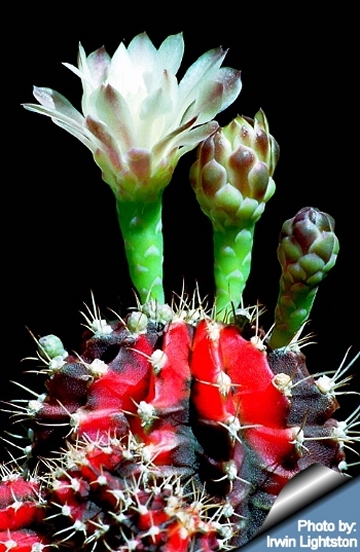
cv. Hibotan
Nishiki
Photo
and ©
copyright by
Irwin Lightstone (http://www.radiantimagesphotography.net
) |
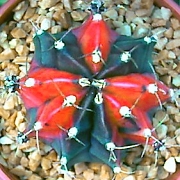
cv. Hibotan Nishiki
|
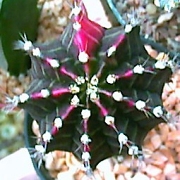
Cv. Pink-Kuro |
|
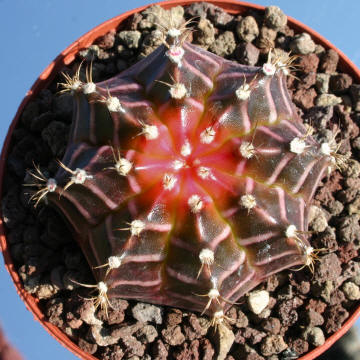 |
|
Photo of
conspecific taxa, varieties, forms and cultivars of
Gymnocalycium mihanovichii.
Advertising
|
|
|
|
|
Family:
Cactaceae (Cactus
Family)
Scientific name: Gymnocalycium mihanovichii var. friedrichii
Werdermann,
In: Kakteen and. Sukk. Pflanzen, Bd. 4, Mappe
29, pl.113, 1936
Origin: From south to North-Western
Paraguay (Chaco -Department Boquerón)
Habitat: Grows among scrubs in
high-savannah
Common English Names include: "Red Cap
Cactus”, “Ruby Ball”, "Red HIBOTAN", "HIBOTAN", “Blondie” or “Moon
Cactus”
|
|
|
|
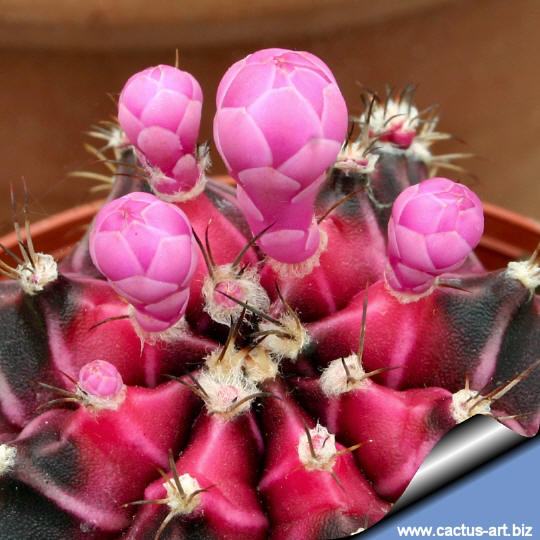
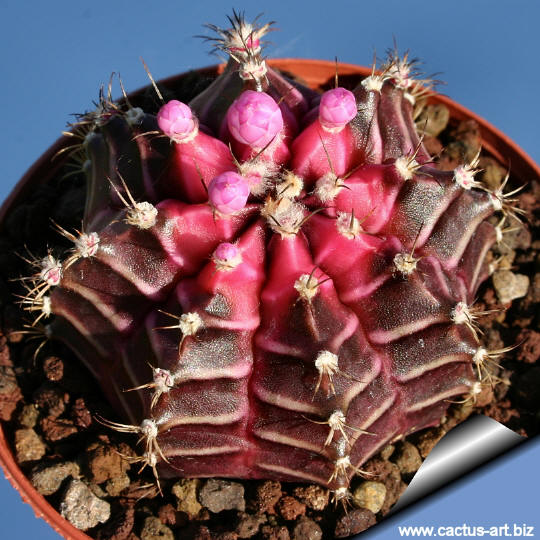
Cultivation: Variegated cacti are
regarded as choice and difficult in cultivation, but
despite that
many of them are relatively easy to
grow. But be aware that they cannot tolerate
prolonged exposure to direct sun light (especially during the hottest
summer days), so grow them in half-shade or under filtered sun.
They are sometime seen as grafted plants, but many grow well on
their own roots, too.
On the contrary,
the albinos can survive only if grafted on a strong green base.
Use mineral well-permeable substratum with little organic matter
(peat, humus). Water sparingly from
March till October and keep perfectly dry in
winter
at temperatures from 5 to 15 degrees centigrade.
(In general these plants are more tender and cannot endure
freezing temperatures
) In the rest period no high atmospheric humidity!!
Feed with a high potassium fertilizer in summer.
Frost Tolerance: Avoid frost.
Propagation: Plants are often grafted onto column-shaped cacti,
but the forms with some chlorophyll can be reproduced by seeds.
|
|


|
|